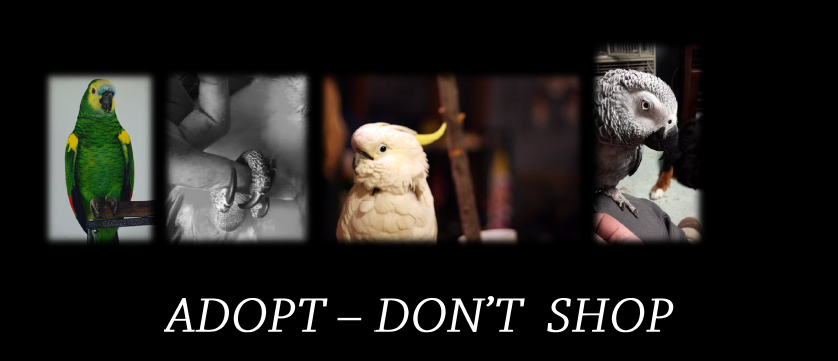Cages and Toys
You ever hear that saying that bigger is better? That is doubly true when it comes to parrots and their cages.
In the wild, parrots have no physical boundaries, they come and go from tree to tree and are able to stretch and exercise their wings and legs and build up strong muscles – in captivity they are not able to do this as freely.
A cage should be big enough to accommodate a bird who is able to flap both wings and not touch any sides of the cage – a square/rectangular or dome top cage are the normal ones seen today.
Ensure the cage is powder coated or stainless steel, any others could be toxic when chewed on – and birds DO love to chew.
It should have various sizes and textures of perches and a minimum of 3 food bowls.
Ensure that the cage is SUITED to the species – you would never place a budgie in a macaw cage as he could easily get his head caught up in the bars and possibly his entire body.
The bar spacing must be adequate for the bird and strong enough to withstand the beak of a large bird.
When assembling the cage ensure that there are no rust spots/loose bolts/sharp edges/peeling paint etc.
When you acquire a bird from a previous home, double check their current cage is safe and suitable, while they may have been living in it for years, that does not mean that it is still in good condition and parrot safe.
It should have a multitude of toys that should be rotated weekly.
It should have 2 trays in the bottom, the first one is the grate and allows the food/droppings to fall underneath this onto a tray. Some people cover both with newspaper while others only cover the bottom tray, this paper should be changed every day to discourage mold growth on old food (which the bird could ingest)– and the attraction of bugs.
Some birds are escape artists – mostly cockatoos and macaws and have figured out how to open both their food bowls and their doors, you will need to check these on all your cages and outfit them with padlocks or some other kind of bird-safe fastener – theres nothing worse than returning home and seeing the destruction a parrot can/will do when left unsupervised. Escape is also incredibly dangerous to the life of the bird.



